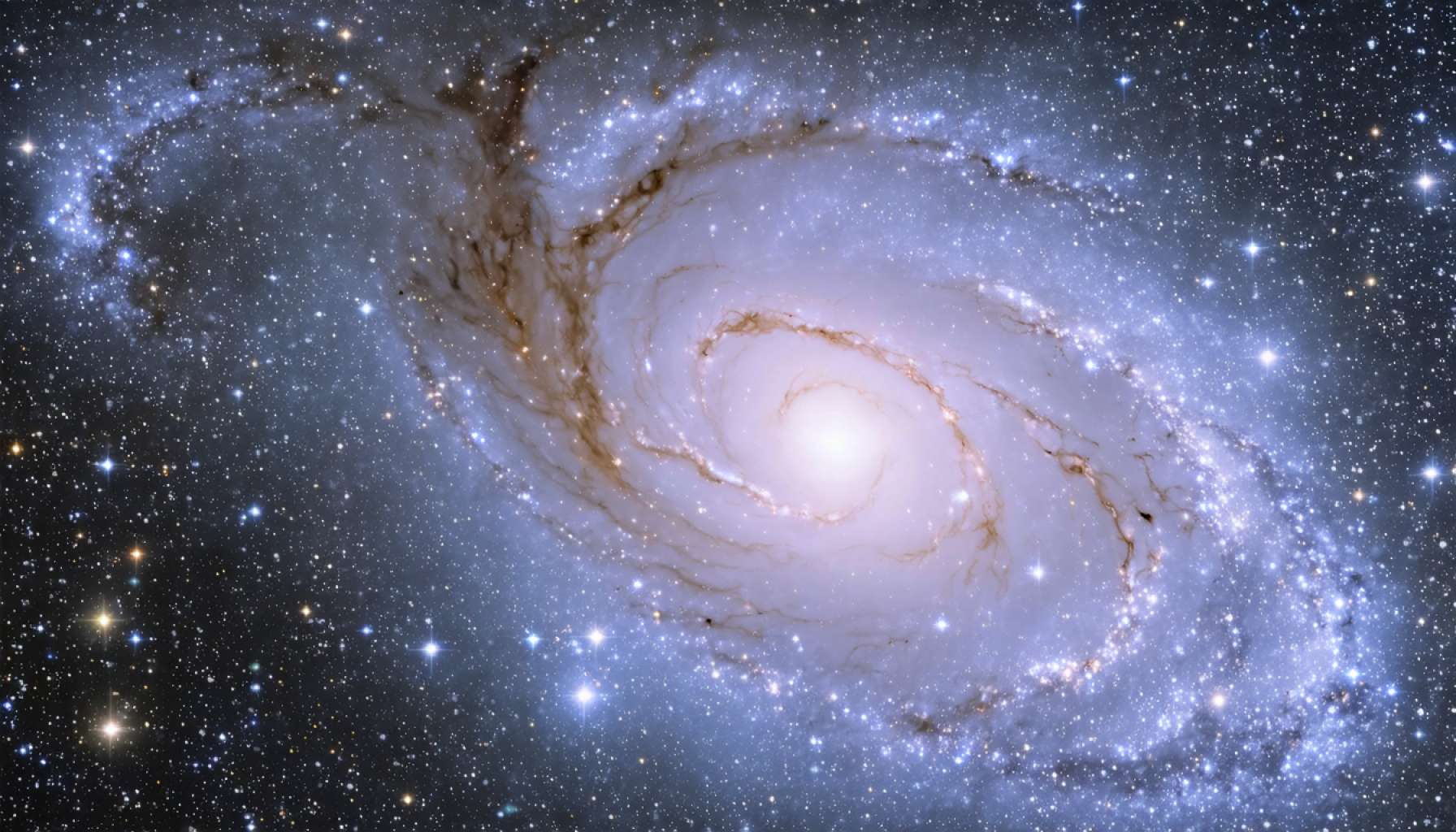- The galaxy JADES-GS-z14-0, 13.4 billion light-years away, challenges previous beliefs about the formation and maturity of galaxies.
- Discovery of oxygen in this distant galaxy suggests rapid chemical evolution and early star formation.
- Findings require a reevaluation of cosmic timelines, indicating faster galaxy development than traditional models assumed.
- ALMA’s precision in measuring galaxy distance underscores its importance in cosmic exploration.
- Collaboration between the James Webb Space Telescope and ALMA enhances understanding of early galaxies.
- This discovery sparks curiosity and a paradigm shift in astronomy, highlighting the universe’s dynamic nature.
- The universe remains a grand puzzle, with tools like ALMA aiding in unraveling its complex story.
A startling celestial revelation has emerged from the depths of the universe, upending longstanding theories on the birth and growth of galaxies. A galaxy, romantically named JADES-GS-z14-0, captured the interest of the astronomical community with the discovery of oxygen—a discovery that challenges the timeline of cosmic development.
Using the immense capabilities of the Atacama Large Millimeter/submillimeter Array (ALMA), scientists have unveiled a peculiar secret lying 13.4 billion light-years away. As the light from JADES-GS-z14-0 reaches Earth, we gaze back nearly 13.4 billion years, witnessing a universe when it was a mere toddler at 2% of its current age.
JADES-GS-z14-0 did not conform to the youthful innocence expected of newborn galaxies. Instead, it displayed a maturity reminiscent of a seasoned traveler, forged through rapid chemical evolution. This surprises astronomers, who previously held that heavy elements like oxygen formed only in mature galaxies, not in the early universe. The unexpected maturity indicates a breathtaking pace of star formation and demise, birthing and shedding heavy elements into the cosmic soup far earlier than believed.
The findings prompt a reevaluation of cosmic timelines. Traditional models presumed a more leisurely evolution, with galaxies transforming slowly over eons. Yet JADES-GS-z14-0 whispers a tale of blazing growth and swift maturity, igniting curiosity about what other secrets the young universe holds.
The precision with which ALMA confirmed the galaxy’s staggering distance—a feat likened to measuring a single centimeter across a full kilometer—cements its position as a critical tool in cosmic exploration. This synergy between the James Webb Space Telescope and ALMA not only illuminates the distant past but also reshapes our understanding of the first galaxies’ evolutionary journey.
As questions multiply like stars in a dark sky, astronomers remain poised at the brink of a paradigm shift. The universe, it seems, is more dynamic and enigmatic than previously imagined. Every discovery peels back a layer of the cosmic onion, revealing the complex beauty of our universe and inviting us to look deeper and wonder more.
This revelation serves as a reminder that our universe, grand and boundless, is not only a puzzle to unravel but also a frontier to explore. With tools like ALMA and assemblies of the world’s keenest minds, we edge ever closer to deciphering the vast and beautiful story told by the stars.
Unveiling the Mysteries of JADES-GS-z14-0: How an Ancient Galaxy Challenges Cosmic Timelines
The Discovery That Shifts Cosmic Narratives
The recent revelation of galaxy JADES-GS-z14-0 has shaken the foundations of cosmic understanding, revealing the presence of oxygen in a galaxy that existed 13.4 billion years ago. This unexpected find suggests a rapid chemical evolution and fast-track maturity in the early universe, raising intriguing questions about our models of galaxy formation and evolution.
The Tools Behind the Revelation
Atacama Large Millimeter/submillimeter Array (ALMA):
ALMA, situated in Chile, is a collection of 66 high-precision antennas that offer unparalleled insights into the universe by capturing millimeter and submillimeter wavelengths. It played a crucial role in measuring the distance to JADES-GS-z14-0, confirming its age and the presence of heavy elements like oxygen.
James Webb Space Telescope (JWST):
JWST complements ALMA by offering exceptional infrared imaging capabilities, allowing scientists to peer even further back into the universe’s history. The collaboration between JWST and ALMA is revolutionizing our understanding of the cosmos.
Real-World Implications and Future Use Cases
Reevaluation of Cosmic Timelines:
The discovery suggests that galaxies may mature more swiftly than previously assumed. This has significant implications for the study of cosmic timelines, potentially leading to revised models and theories.
Understanding Star Formation:
As early galaxies like JADES-GS-z14-0 challenge current theories, they provide valuable insights into the rate and nature of star formation in the early universe.
Technological Advancements:
The success of ALMA and JWST indicates a bright future for space exploration technologies, inspiring investment in more advanced equipment, potentially including next-generation observatories.
Insights & Predictions
Astronomers predict that further observations will likely uncover more galaxies displaying early maturity. This may reveal that the universe’s earliest periods were teeming with complex chemical processes and star formation activities far different from prior expectations.
How-To: Preparing for a Future in Astronomy
1. Stay Informed: Keep up with the latest discoveries in astronomy by following reputable news sources and research publications.
2. Educational Pathways: Consider careers in astrophysics or engineering to contribute to cutting-edge research and technological development.
3. Engage with Community: Join astronomy clubs or online forums to discuss findings with like-minded individuals.
Pros & Cons Overview
Pros:
– Offers new insights into early universe conditions.
– Promotes technological advancements in astronomy.
Cons:
– Challenges existing models, requiring reevaluation of longstanding theories.
– Poses questions yet to be answered, potentially complicating research efforts.
Concluding Thoughts
The revelation of JADES-GS-z14-0 is a vivid reminder that the universe is an intricately woven tapestry of mysteries waiting to be unraveled. As we delve deeper into this cosmic narrative, each new discovery invites us to look beyond known boundaries and embraces the unknown. Equipped with innovative tools and an insatiable curiosity, the scientific community stands ready to decode the universe’s most profound secrets.
For more on groundbreaking discoveries in astronomy, visit the ALMA Observatory and the James Webb Space Telescope.
